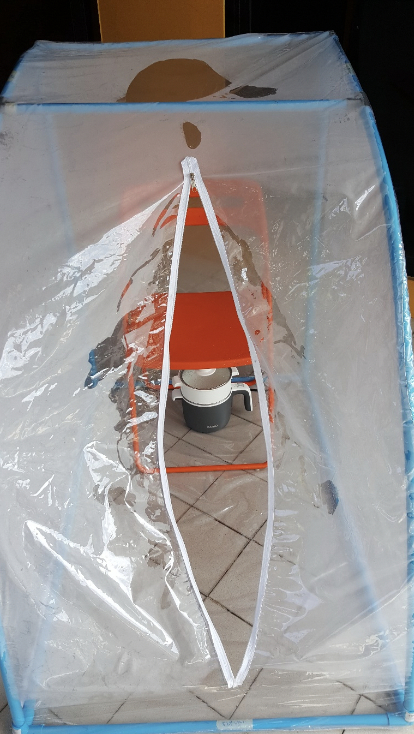This is what Waew Jeerphat aims to create with her Thai Sauna Installation. She imagined combining traditional Thai cooking and wellness. This lead to a proposal for a food experience of sitting in a small tent, a one-person steam cabin, which would simultaneously cook the herb-infused rice under your chair.
Waew is an artist and chef who is passionate about combining performance art and traditional Thai cooking. She feels Thai culture has been compromised in the last years and in order to facilitate more conversations about the significance of Thai cuisine, she translates her skills into a unique experience. With her current installation, she aims to replicate the experience of a Thai Sauna. One of the design questions she takes to heart is, which materials are needed to be entirely sustainable?
Then came the next question: What if you were able to take a sauna in a cabin made out of edible material so that the waste would become part of the dinner experience?
Steaming Wellness
Part of Waew’s inspiration for this project came when she noticed how the Dutch sauna experience is very different from the one she was used to in Thailand, one which was more private. In addition, she needed to take Covid19 along in the design process of a food experience. How to make something that could still be a shared experience, while keeping social distance?
These one-person steaming pods combined the experience of relaxing and honouring one’s body and health, plus the social distance, and on top of that experience Thai cuisine.
Tofu, Bean curd or Rice paper?
The installation is still in the experimental stage since Waew is attempting to make the tent out of edible material, instead of the initial plastic. She has already tried to use tofu sheets and bean curd, but they have proven to be quite challenging and end up cracking in the “drying” stage. However, rice paper has produced more successful results but it is still a challenge. Waew explains how she must use large sheets that will properly fit around the scaffolding which make it more difficult to soak. Before the “drying” stage, one must soak the sheets entirely in water and then work quickly to mould them into the correct shape, before they dry.
Waew says “Using rice paper to make spring rolls is very different than using rice paper to make other things.”
Wouldn’t it be cool if you were able to take a sauna and then be able to eat the rice paper which structured your experience?
Follow the next blog post with Chef Waew: Chicken Coop Sauna
